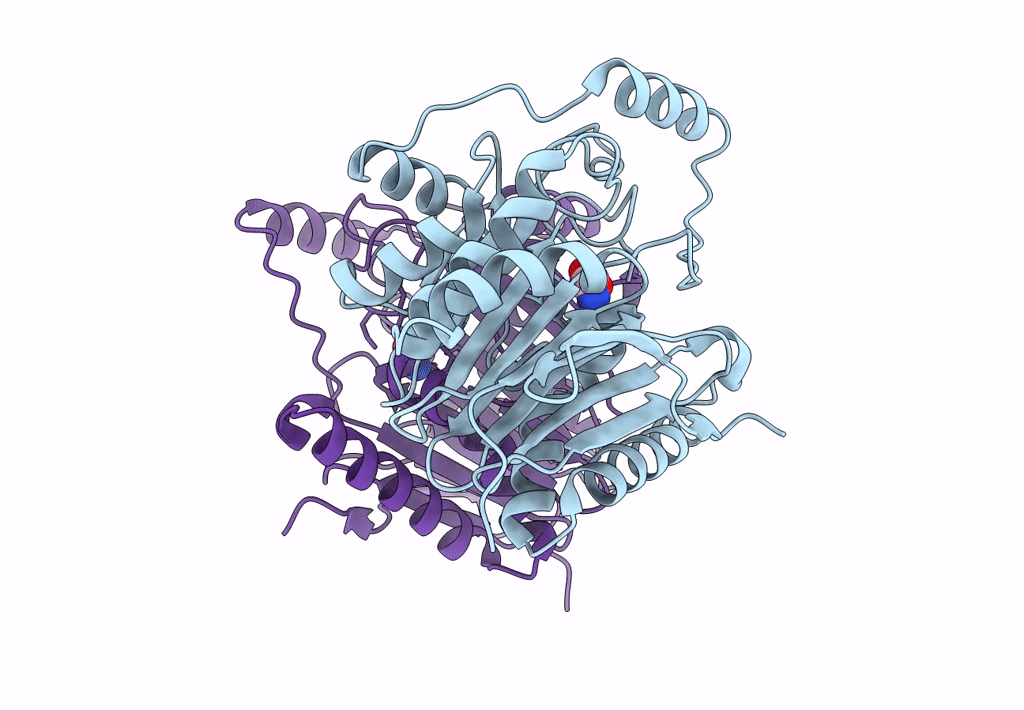
Deposition Date
2003-04-24
Release Date
2003-05-06
Last Version Date
2024-02-14
Entry Detail
PDB ID:
1P4V
Keywords:
Title:
CRYSTAL STRUCTURE OF THE GLYCOSYLASPARAGINASE PRECURSOR D151N MUTANT WITH GLYCINE
Biological Source:
Source Organism:
Elizabethkingia meningoseptica (Taxon ID: 238)
Host Organism:
Method Details:
Experimental Method:
Resolution:
1.90 Å
R-Value Free:
0.22
R-Value Work:
0.19
Space Group:
P 1


